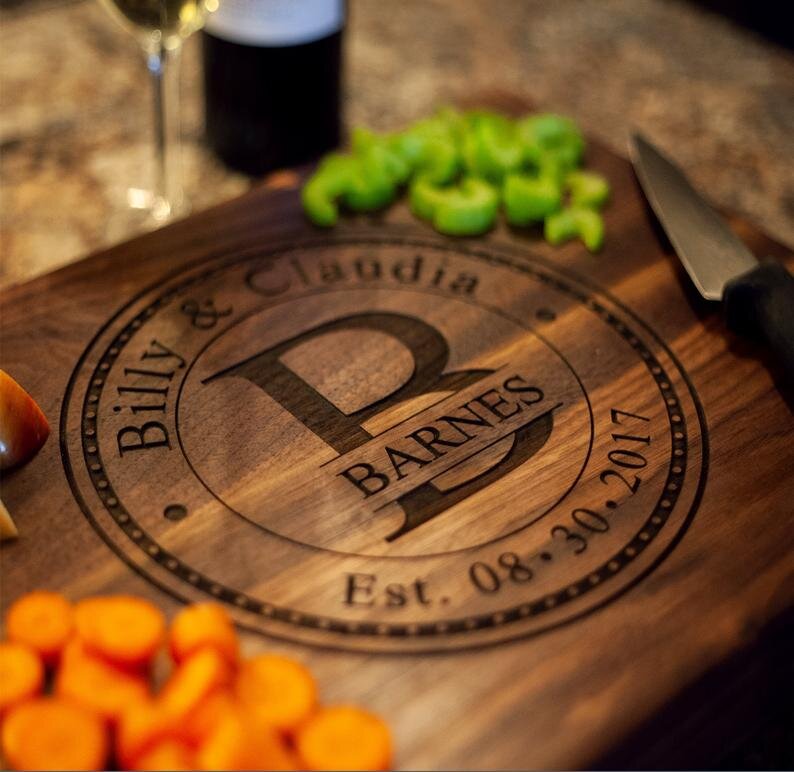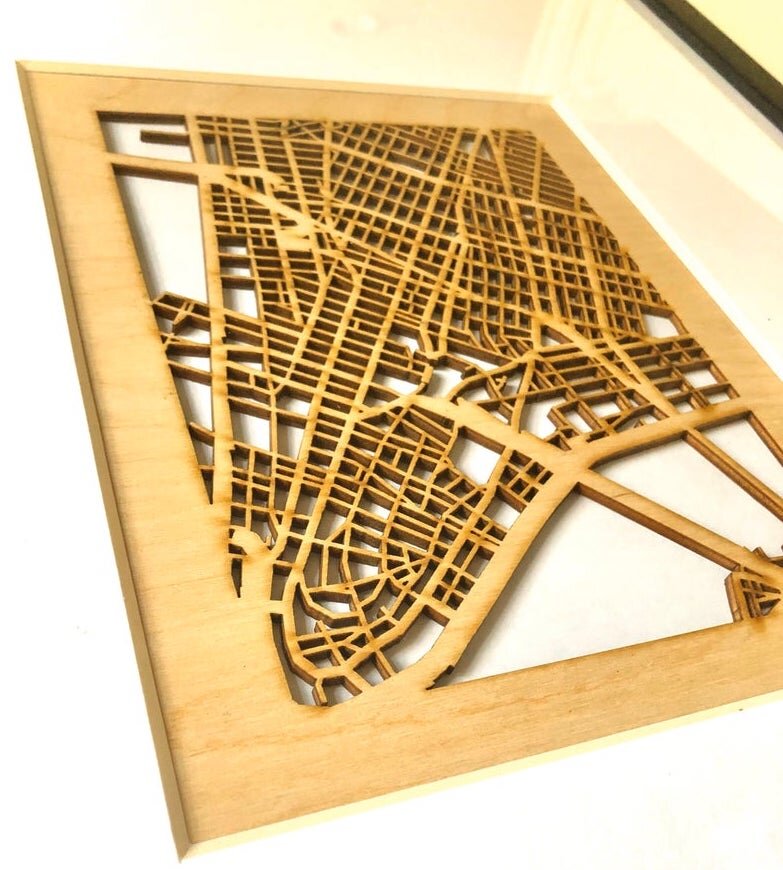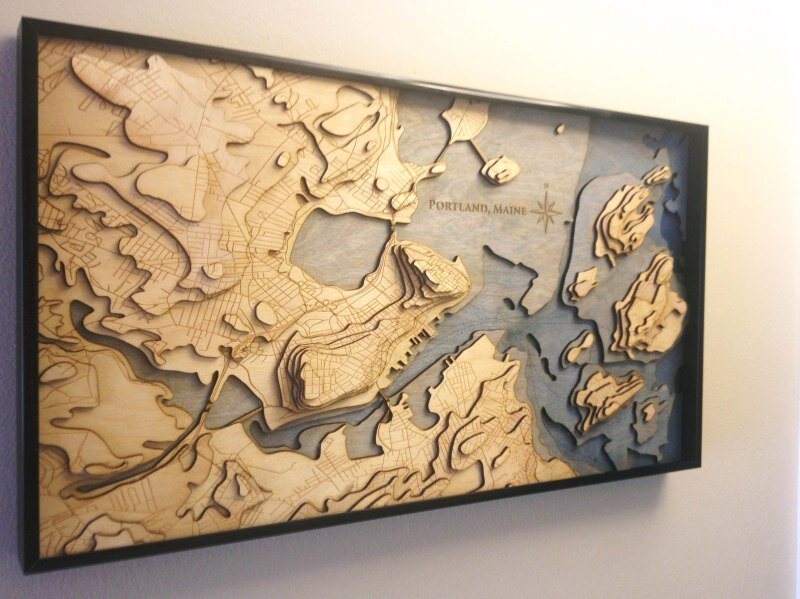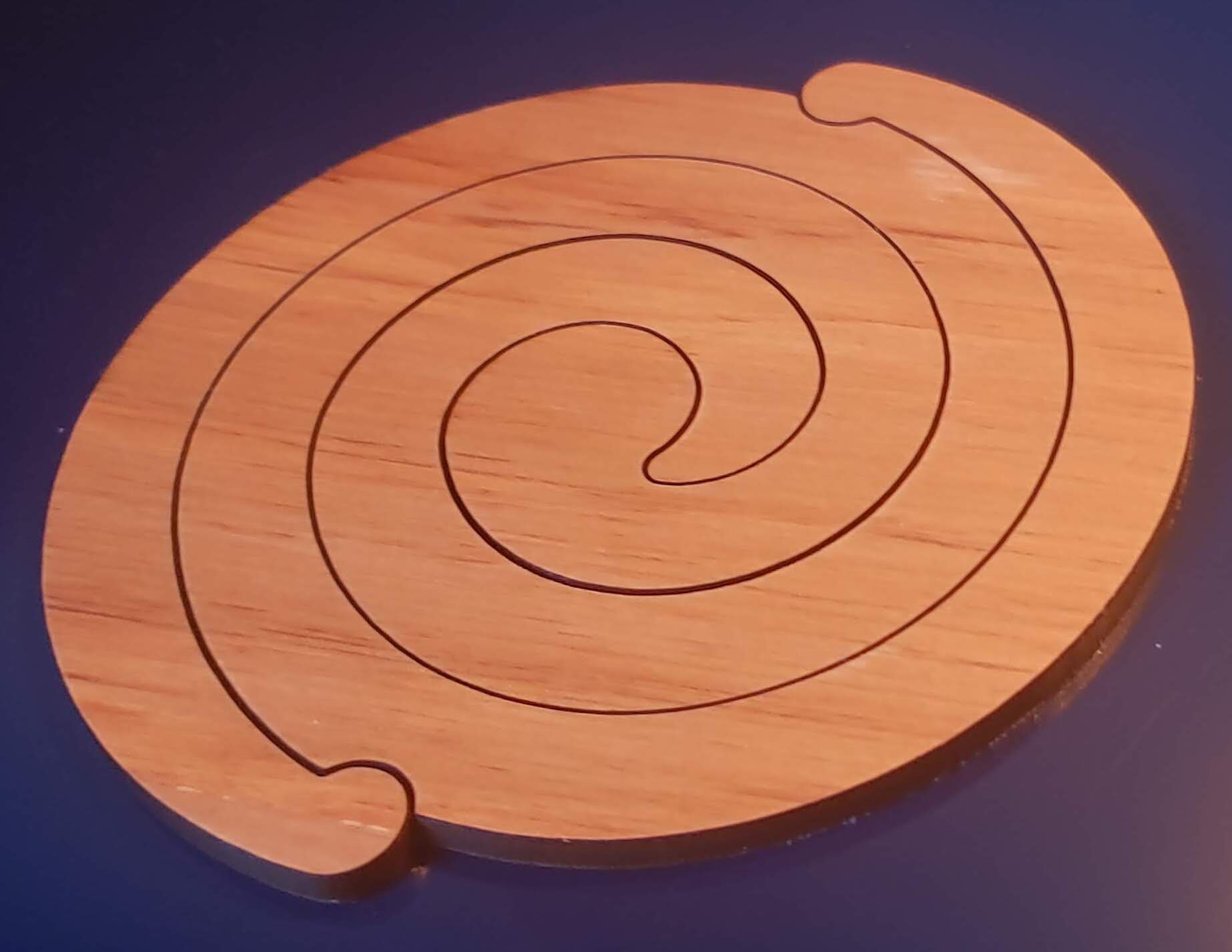I’ve often been asked if the engraved coasters I make are “laser cut” - they are not - which brings me to today’s topic: how to tell if something is cut or engraved with a laser (vs. cut or engraved with a CNC).
Lasers always leaves telltale signs in wood: since a laser does its work with heat, there will be burn marks along the edges of whatever was cut. And similarly, a laser does its engraving into wood items via burning, so that engraving is always burned. This isn’t the burning you see of a log in the fireplace, but rather, because of the very controlled power and positioning of a laser, just a potentially modest darkening of the material around the edges. That is, the engraving done by a laser will never be the same color as the natural wood.
Note the uneven texture and darker color of the engraving, typical for engraving via laser.
Incredible detail in thin wood, but note the discoloration around the edges, especially at the corners where the laser lingered slightly longer.
When using a laser with wood, there are really just two “depths” you can set the laser to: engrave, or cut all the way through. You cannot use a laser to create detailed multi-depth cuts, except via stacking those layers on top of each other after the laser has cut them.
This multi-layer map shows both laser engraving (to make the streets) and laser cutting (to make the topography).
A laser can provide incredible detail and precision, and also ensure a minimum of wasted material. But because it cuts by heat (i.e.: burning), only relatively thin layers of wood can be laser cut.
This clever pair of coasters was cut from a single thin piece of wood; no CNC bit could produce such a narrow kerf.
The coasters split apart.
Cutting or CNCing the wood uses a rotating cutter head to remove material from a solid piece of wood. The three main advantages of this as compared to a laser are:
No discoloration of the edges or surface from a laser
Great control over depth of cut, allowing you to make true three dimensional objects or cuts
Ability to work with much thicker pieces of wood
However, because the material is removed by a spinning cutter head rather than burning away by the width of the laser beam, a laser generally allows you to get more detail and sharper edges. That is because the cutting or engraving is just the width of the laser beam, and because a spinning bit can sometimes “tear out” wood fibers around where it is cutting. Also, for interlocking pieces - such as in a puzzle or the pair of coasters above - laser cut pieces would generally fit together more snugly and can be cut via just “drawing the lines”; trying to do that with a CNC would either leave a much larger border between the pieces, or require cutting individual pieces from much larger stock if a snug fit is desired.
Compare that with these CNC’d objects:
These bunny “canvases” - which have not yet been painted by artist Jun Yang - are of 1/2” thick baltic birch plywood, far too thick to cut by laser.
The base of this single-digit Nixie clock was made via CNC, with engraving done by a very small engraving bit, and the cavities for the buttons - that had to be of a precise depth into this 3/4” thick walnut - made with a larger cutting tool.
The tray part of this 2.5” deep key tray was cut out via a CNC; a laser could not remove the interior material to a precise depth, nor cleanly shape the vertical interior or exterior sides.
Though laser engraving might also have been an option to engrave the messages on these coasters, I liked the more natural appearance and depth provided by CNC engraving. The cutting tool was basically shaped like a cone; the deeper that bit goes into the wood, the wider the line. You can read up more here on some of the planning involved in CNC engraving.
And just like the multi-layer laser-cut map above, we can construct multi-layer CNC pieces when the wood is much thicker, such as this lion, one of the more intricate and involved art pieces I’ve done so far:
To sum up the properties of the results: laser engraving gives you incredible detail albeit with some discoloration, while CNC engraving gives you depth. And laser cutting gives you very clean vertical lines but also with discoloration, and limited to thin materials, while CNC cutting allows you to work through thick materials and to cut to very specific depths to form truly three dimensional objects.
Do you have some cool laser- or CNC-made products to share? Or does this trigger other questions in how to tell the difference, or when to use one approach vs. the other? I’d love to hear your thoughts on the topic.










